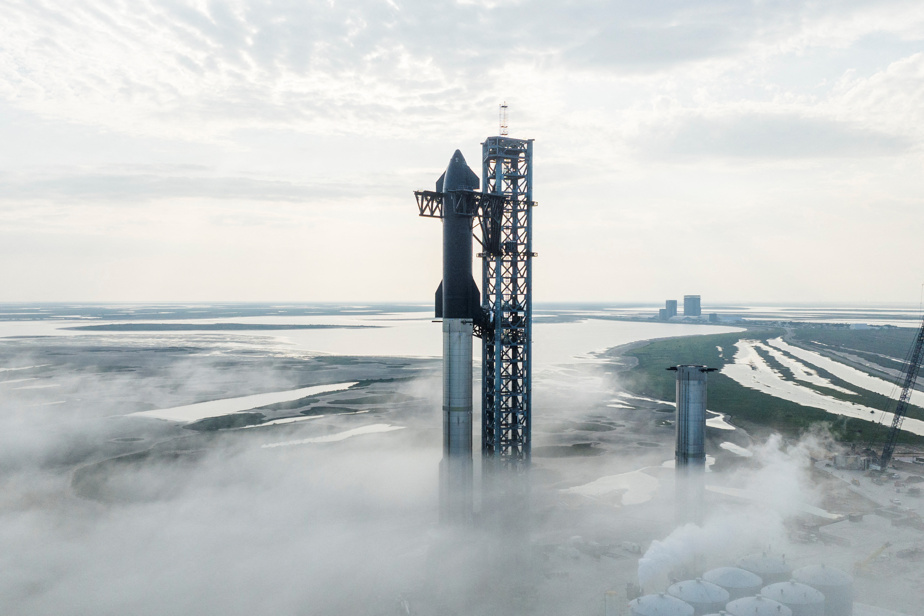(Washington) After obtaining a long-awaited authorization from the American air regulator, SpaceX has announced that it is targeting Monday for a first test flight of Starship in its complete configuration, the largest rocket in the world.
This 120-meter-tall launcher, developed by Elon Musk’s company for years, is intended for deep space travel, to the Moon and Mars.
The take-off is to take place from the Starbase space base, located in the far south of Texas, in the United States.
The two-and-a-half-hour firing window opens Monday at 7 a.m. local time (8 a.m. Eastern), SpaceX announced Friday. Fallback dates are scheduled for the week.
The outcome of the test is uncertain, but SpaceX said its success would be measured by “how much you learned” from it.
“Success perhaps, exaltation guaranteed! “, tweeted Elon Musk.
This launcher has never flown in its complete configuration, with its first stage, called Super Heavy.
Only the second stage of the vehicle, the Starship spacecraft which by extension gives its name to the entire rocket, carried out suborbital test flights (at an altitude of around 10 km), several of which had ended in impressive explosions.
It is this spacecraft that was chosen by NASA to land astronauts on the Moon during the Artemis 3 mission, officially scheduled for 2025.
On Friday, the US civil aviation regulator (FAA) issued a flight license to Starship “valid for five years”.
In the future, both stages of the spacecraft must be able to come to rest on Earth, making the rocket fully reusable. But for this first flight, there will be no attempt to retrieve them, and both Starship and Super Heavy are expected to crash into the ocean.
The idea of a reusable launcher, Elon Musk’s grand strategy, is to cut prices. Each Starship flight could thus ultimately cost “less than ten million” dollars, he has assured in the past.
In February, SpaceX conducted an impressive ground test of the Super Heavy engines. A total of 31 of the 33 Raptor engines had ignited, “the highest number of simultaneous rocket engine ignitions in history,” according to SpaceX.
A few months ago, NASA’s SLS rocket (98 meters high) became the most powerful operational rocket in the world during its maiden flight for the Artemis 1 lunar mission. It could therefore be dethroned as early as next week.
